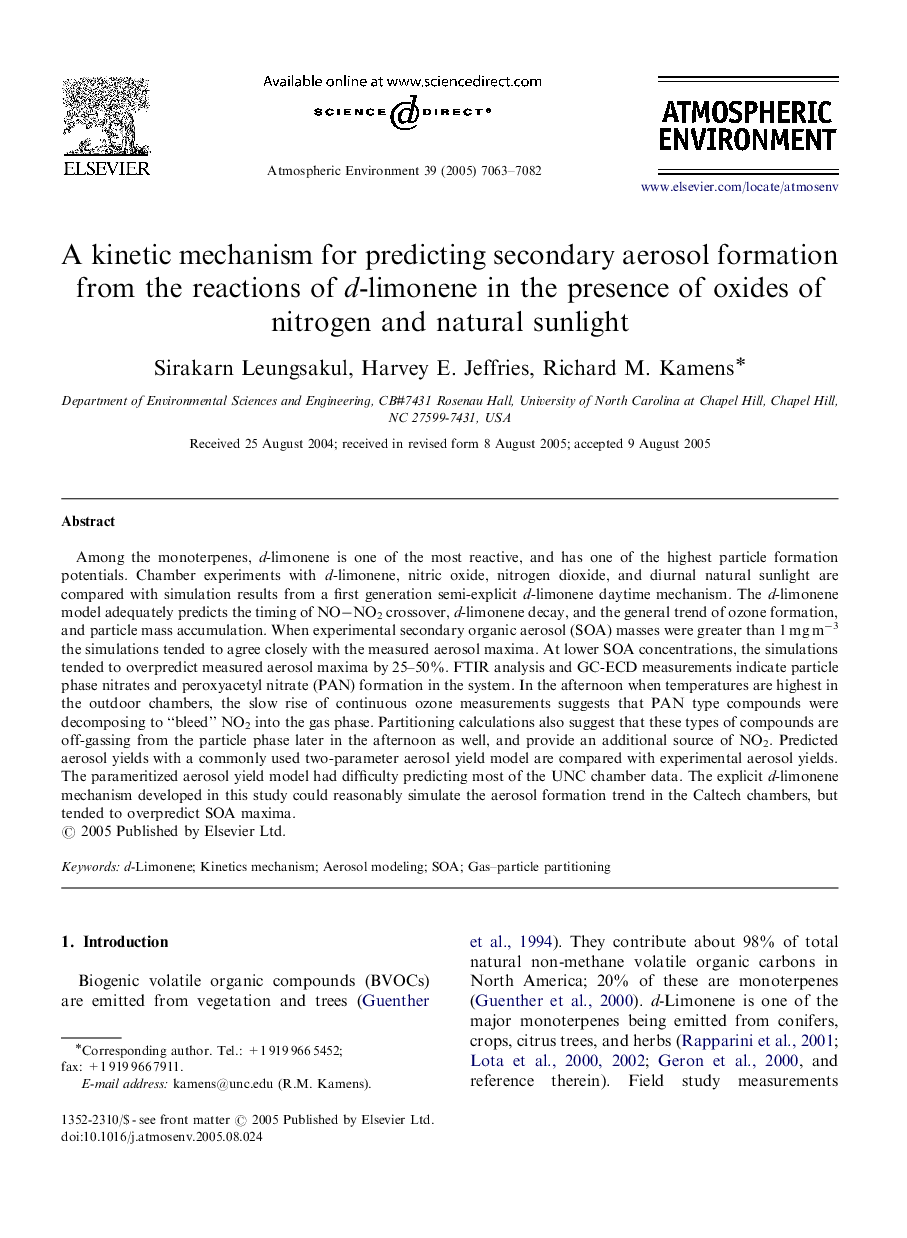| کد مقاله | کد نشریه | سال انتشار | مقاله انگلیسی | نسخه تمام متن |
|---|---|---|---|---|
| 4445015 | 1311265 | 2005 | 20 صفحه PDF | دانلود رایگان |

Among the monoterpenes, d-limonene is one of the most reactive, and has one of the highest particle formation potentials. Chamber experiments with d-limonene, nitric oxide, nitrogen dioxide, and diurnal natural sunlight are compared with simulation results from a first generation semi-explicit d-limonene daytime mechanism. The d-limonene model adequately predicts the timing of NO−NO2 crossover, d-limonene decay, and the general trend of ozone formation, and particle mass accumulation. When experimental secondary organic aerosol (SOA) masses were greater than 1 mg m−3 the simulations tended to agree closely with the measured aerosol maxima. At lower SOA concentrations, the simulations tended to overpredict measured aerosol maxima by 25–50%. FTIR analysis and GC-ECD measurements indicate particle phase nitrates and peroxyacetyl nitrate (PAN) formation in the system. In the afternoon when temperatures are highest in the outdoor chambers, the slow rise of continuous ozone measurements suggests that PAN type compounds were decomposing to “bleed” NO2 into the gas phase. Partitioning calculations also suggest that these types of compounds are off-gassing from the particle phase later in the afternoon as well, and provide an additional source of NO2. Predicted aerosol yields with a commonly used two-parameter aerosol yield model are compared with experimental aerosol yields. The parameritized aerosol yield model had difficulty predicting most of the UNC chamber data. The explicit d-limonene mechanism developed in this study could reasonably simulate the aerosol formation trend in the Caltech chambers, but tended to overpredict SOA maxima.
Journal: Atmospheric Environment - Volume 39, Issue 37, December 2005, Pages 7063–7082